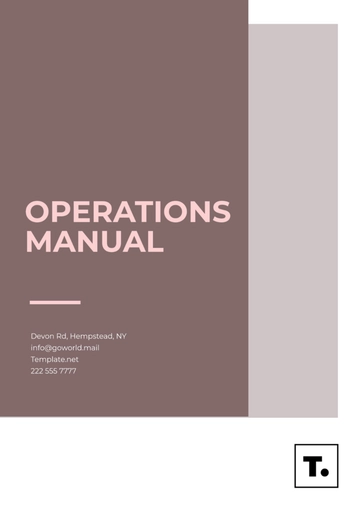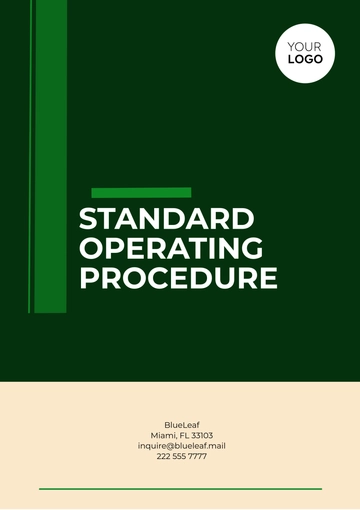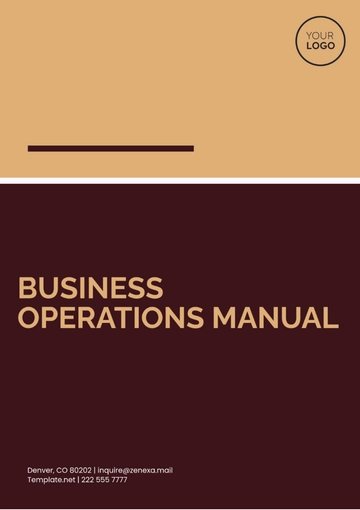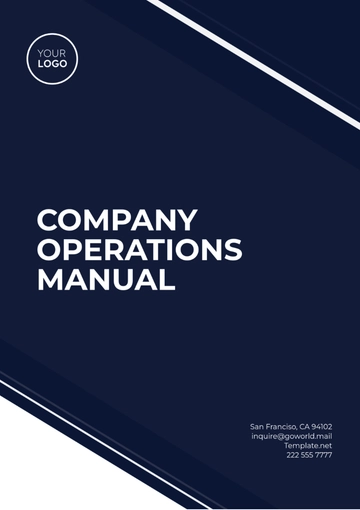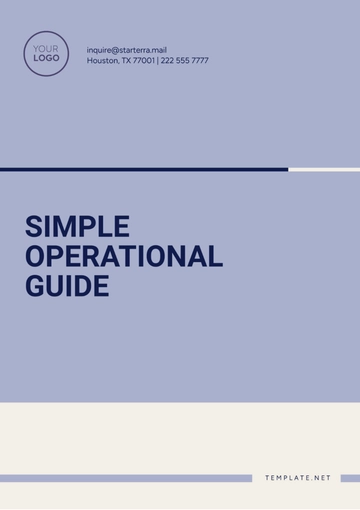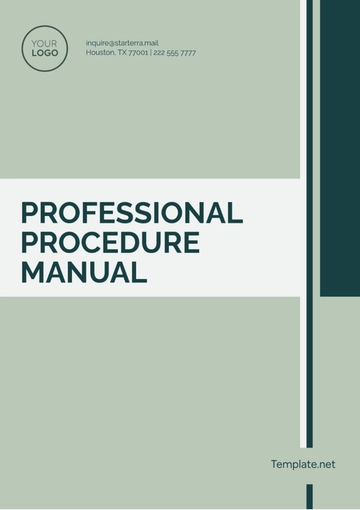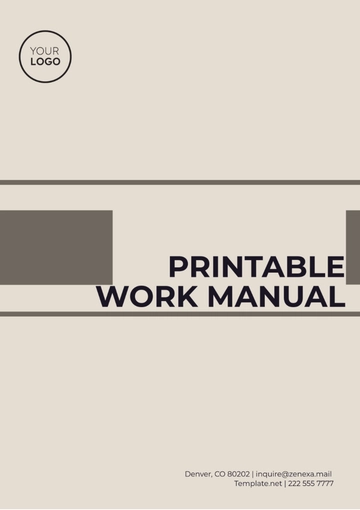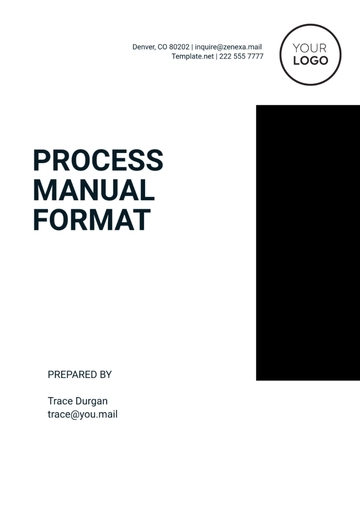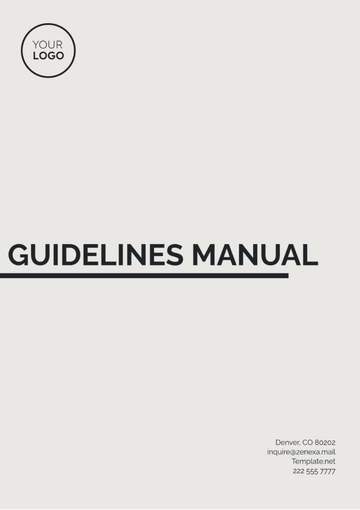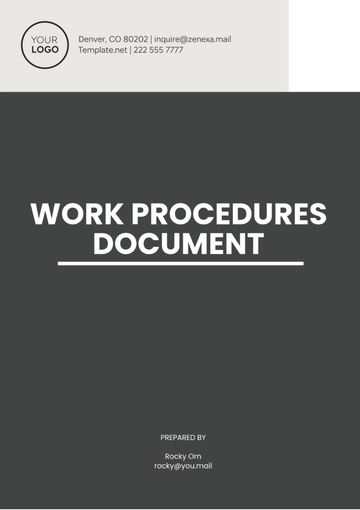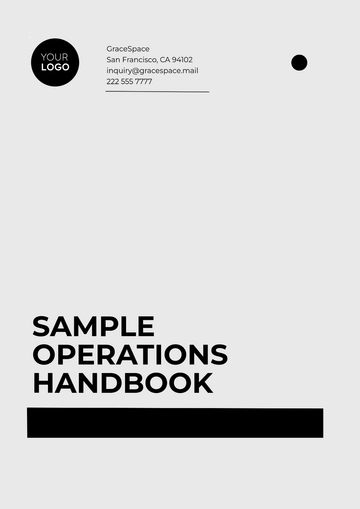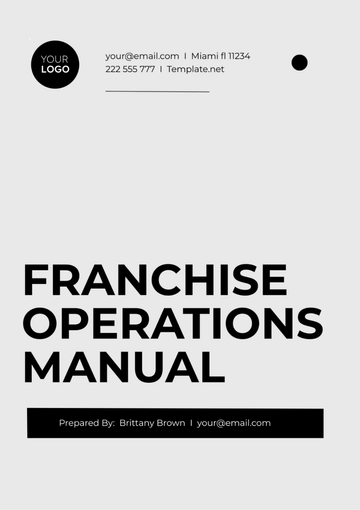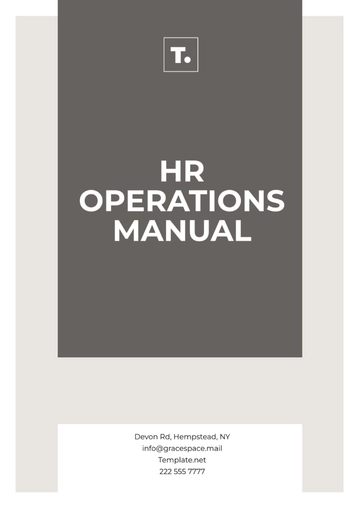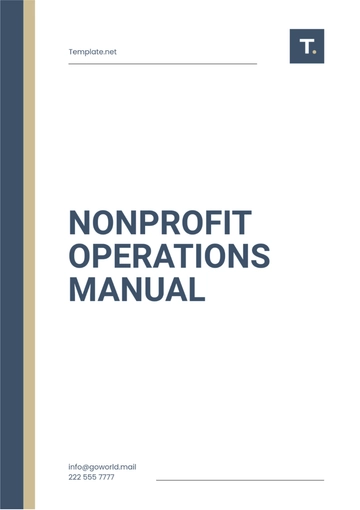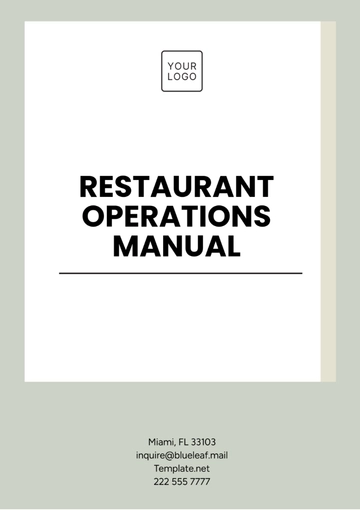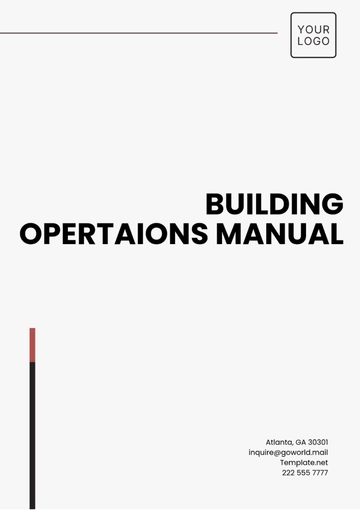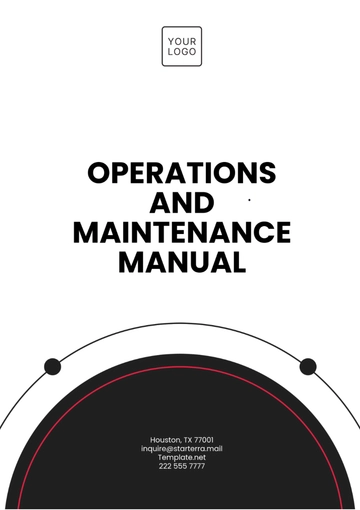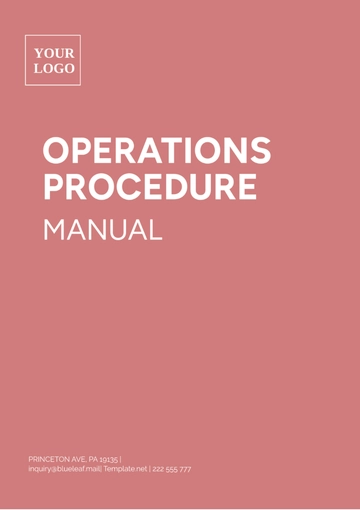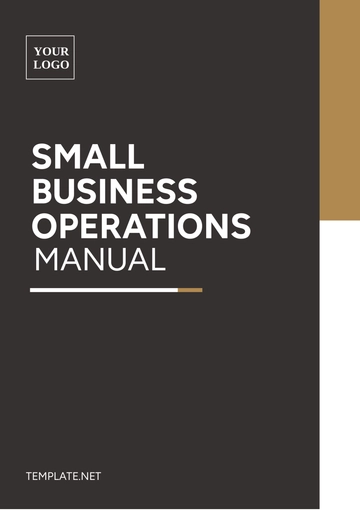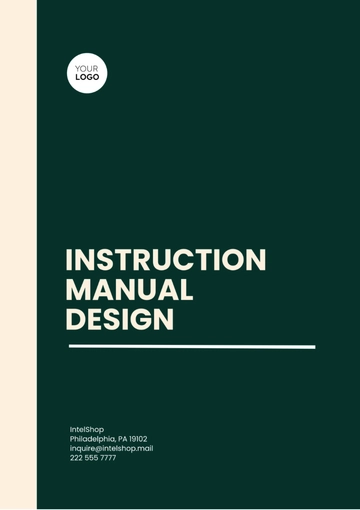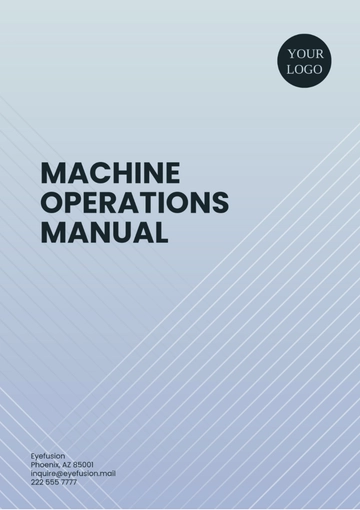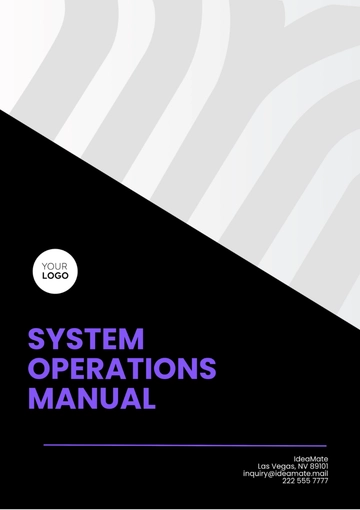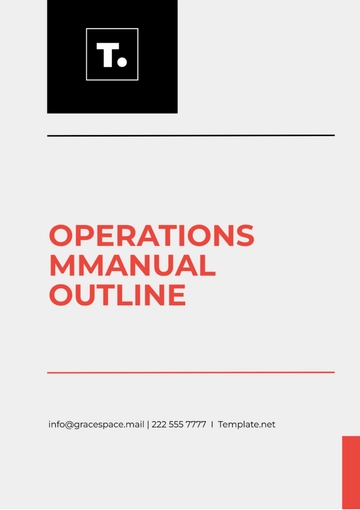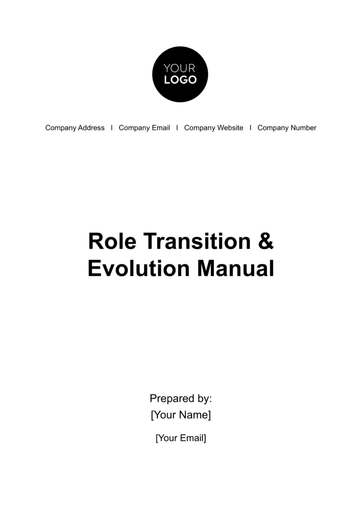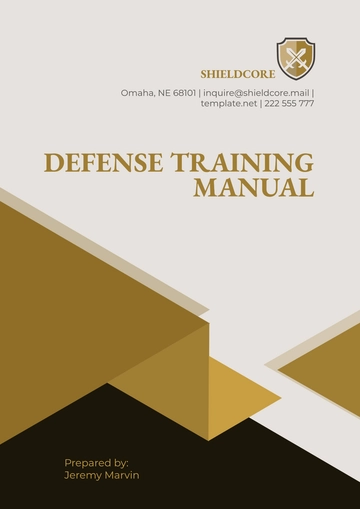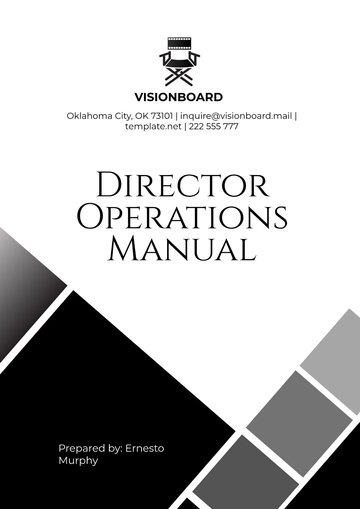Free Warehouse Management Training Manual
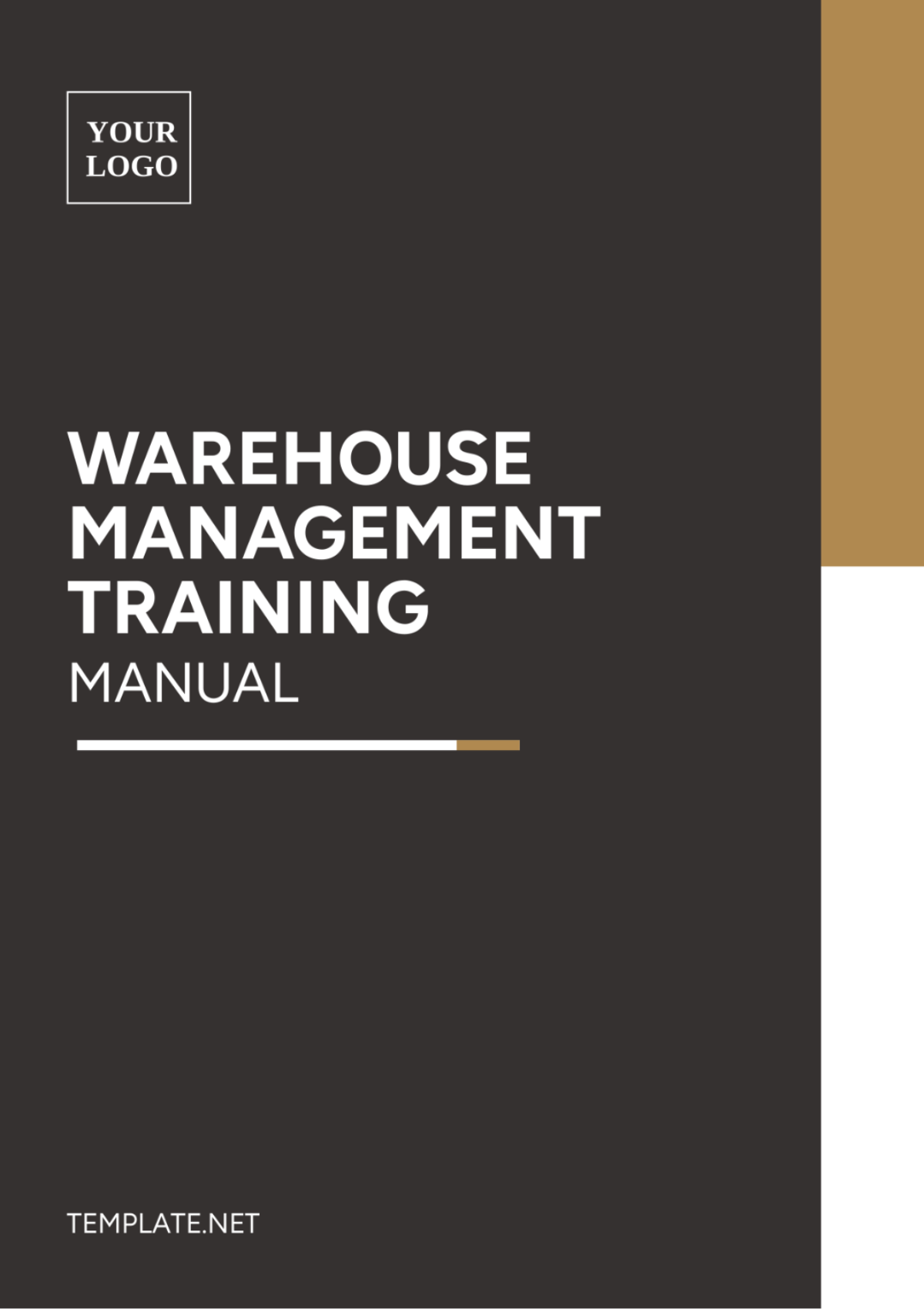
Name: | Company: | Department: | Date: |
|---|---|---|---|
[YOUR NAME] | [YOUR COMPANY NAME] | [YOUR DEPARTMENT] | [CURRENT DATE] |
I. Introduction
In this section, [YOUR COMPANY NAME] introduces the Warehouse Management Training Manual and provides an overview of its contents. It outlines the importance of efficient warehouse management for [YOUR COMPANY NAME]'s operations and the role of employees in maintaining optimal efficiency.
Warehouse management is a critical aspect of [YOUR COMPANY NAME]'s operations, ensuring the smooth flow of goods from receipt to dispatch. This manual serves as a comprehensive guide for employees involved in warehouse activities, covering essential processes, safety procedures, and best practices to uphold [YOUR COMPANY NAME]'s standards.
II. Warehouse Operations
A. Receiving Procedures
[YOUR NAME] will detail the procedures for receiving goods into the warehouse. This includes inspection processes, documentation requirements, and proper storage allocation based on inventory management systems. Emphasis will be placed on accuracy and efficiency to streamline the receiving process and minimize errors.
B. Storage and Inventory Management
In this section, [YOUR NAME] will outline the best practices for storage and inventory management within the warehouse. Topics covered include storage methods, inventory tracking systems, and stock rotation techniques. Employees will learn how to maintain organized storage areas and ensure accurate inventory counts to prevent stockouts and overstock situations.
C. Picking and Packing
[YOUR NAME]will explain the procedures for picking and packing orders efficiently. This includes order prioritization, picking methods (e.g., batch picking, zone picking), and packing techniques to ensure goods are prepared for shipment accurately and securely. Safety protocols related to manual handling and equipment usage will also be addressed.
III. Safety Procedures
A. Hazard Identification and Risk Assessment
[YOUR NAME] will guide employees through the process of identifying hazards and assessing risks within the warehouse environment. This includes recognizing potential safety hazards such as slippery floors, heavy machinery, and hazardous substances. Employees will learn how to report hazards and implement control measures to mitigate risks effectively.
B. Emergency Procedures
This section covers [YOUR COMPANY NAME]'s emergency procedures, including evacuation protocols, first aid response, and emergency contact information. Employees will be trained on responding to emergencies such as fires, spills, or medical incidents to ensure the safety of themselves and others within the warehouse premises.
IV. Equipment Usage and Maintenance
A. Equipment Operation
[YOUR NAME] will provide training on the safe operation of warehouse equipment such as forklifts, pallet jacks, and conveyor systems. Employees will learn proper usage techniques, equipment inspection procedures, and safety precautions to prevent accidents and equipment damage during operation.
B. Maintenance Procedures
In this section, [YOUR NAME] will outline the maintenance procedures for warehouse equipment to ensure optimal performance and longevity. This includes regular inspection schedules, lubrication requirements, and troubleshooting techniques for common issues. By following these maintenance procedures, employees can minimize downtime and extend the lifespan of warehouse equipment.
V. Quality Control Procedures
A. Inspection Standards
[YOUR NAME] will explain the quality control procedures implemented in the warehouse to maintain product quality and customer satisfaction. This includes inspection standards for incoming goods, in-process checks, and final product inspection before dispatch. Emphasis will be placed on adherence to quality specifications and identifying non-conforming items for corrective action.
B. Quality Assurance Measures
In this section, [YOUR NAME] will outline the quality assurance measures implemented to ensure consistent product quality. Topics covered include process controls, documentation requirements, and continuous improvement initiatives to enhance quality standards within the warehouse. Employees will learn their roles in maintaining quality assurance and contributing to [Your Company Name]'s reputation for excellence.
VI. Workforce Training and Development
A. Training Programs
[YOUR NAME] will discuss the training programs available to warehouse employees to enhance their skills and knowledge. This includes onboarding training for new hires, ongoing skills development programs, and certification opportunities for specialized roles. Employees will be encouraged to participate in training initiatives to support their career growth and contribute to [YOUR COMPANY NAME]'s success.
B. Performance Evaluation
In this section, [YOUR NAME] will outline the performance evaluation process for warehouse employees. Performance metrics such as productivity, accuracy, and adherence to safety protocols will be assessed regularly to identify areas for improvement and recognize outstanding contributions. Feedback and coaching will be provided to employees to support their professional development and ensure alignment with [YOUR COMPANY NAME]'s goals.
VII. Documentation and Record Keeping
A. Record Management
[YOUR NAME] will explain the importance of documentation and record-keeping within the warehouse. This includes maintaining accurate records of inventory transactions, inspection reports, and safety training records. Employees will learn how to complete documentation accurately and securely store records to facilitate traceability and compliance with regulatory requirements.
B. Document Control Procedures
This section covers [YOUR COMPANY NAME]'s document control procedures to ensure the integrity and confidentiality of sensitive information. Topics include document approval processes, version control, and access restrictions to safeguard against unauthorized access or modification. Employees will be trained on their responsibilities regarding document handling and compliance with [YOUR COMPANY NAME]'s policies and procedures.
VIII. Conclusion
In conclusion, [YOUR COMPANY NAME] emphasizes the importance of adhering to the guidelines outlined in the Warehouse Management Training Manual. By following the procedures and best practices detailed in this manual, employees can contribute to the efficient operation of the warehouse, uphold quality standards, and ensure the safety of themselves and their colleagues. Continuous training and improvement are essential to [YOUR COMPANY NAME]'s success, and employees are encouraged to actively participate in training initiatives and feedback processes to support their professional growth and objectives.
- 100% Customizable, free editor
- Access 1 Million+ Templates, photo’s & graphics
- Download or share as a template
- Click and replace photos, graphics, text, backgrounds
- Resize, crop, AI write & more
- Access advanced editor
Unlock the efficiency of your warehouse with the Warehouse Management Training Manual Template from Template.net. This comprehensive resource is fully editable and customizable, ensuring it fits your specific needs. Seamlessly adjust content with ease using our Ai Editor Tool, empowering your team with top-notch training materials tailored to your operations.
